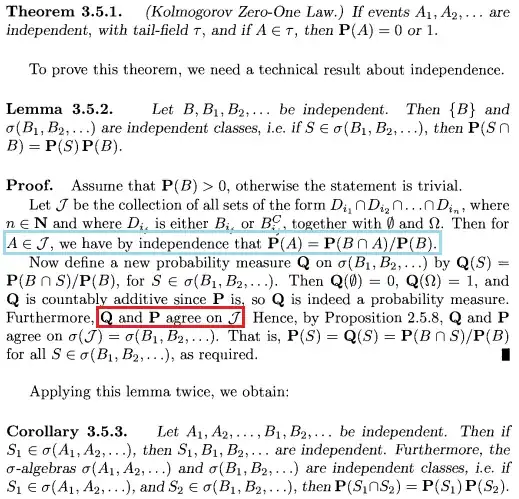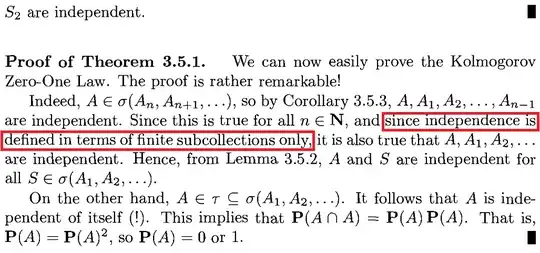Here is the proof of the Kolmogorov Zero-One Law and the lemmas used to prove it in Rosenthal's Probability book:



Here are my questions:
Question 1: In the first red box, does the fact that Q and P agree on J hold because of the statement in the blue box?
Question 2: What is the relevance of "independence is defined in terms of finite subcollections only" ? I was thinking that we can infer the independence of $A, A_1, A_2, ...$ merely from the $\forall n \in \mathbb{N}$.
Here is what I think "independence is defined in terms of finite subcollections only" means:
Given events $(A_n)_{n \geq 1}$, they are defined to be independent if for any indices $i_1, i_2, ..., i_n$,
$P(\bigcap_{k = i_1}^{i_n} A_{k}) = \prod_{k = i_1}^{i_n} P(A_{k})$.
Thus, the "finite subcollections" refers to the $A_{i_1}, A_{i_2}, ..., A_{i_n}$
Assuming I understood that right, how that is relevant?